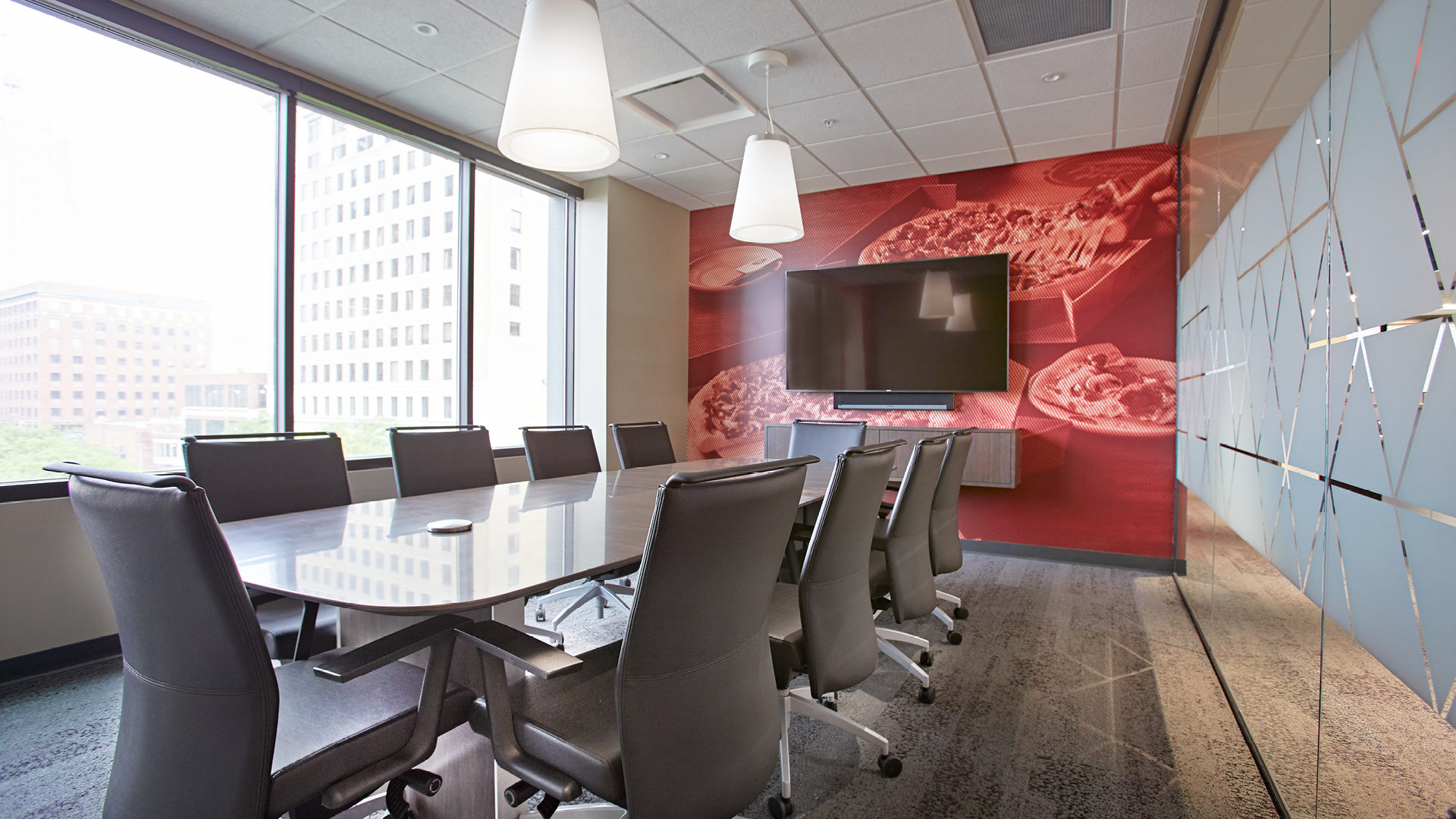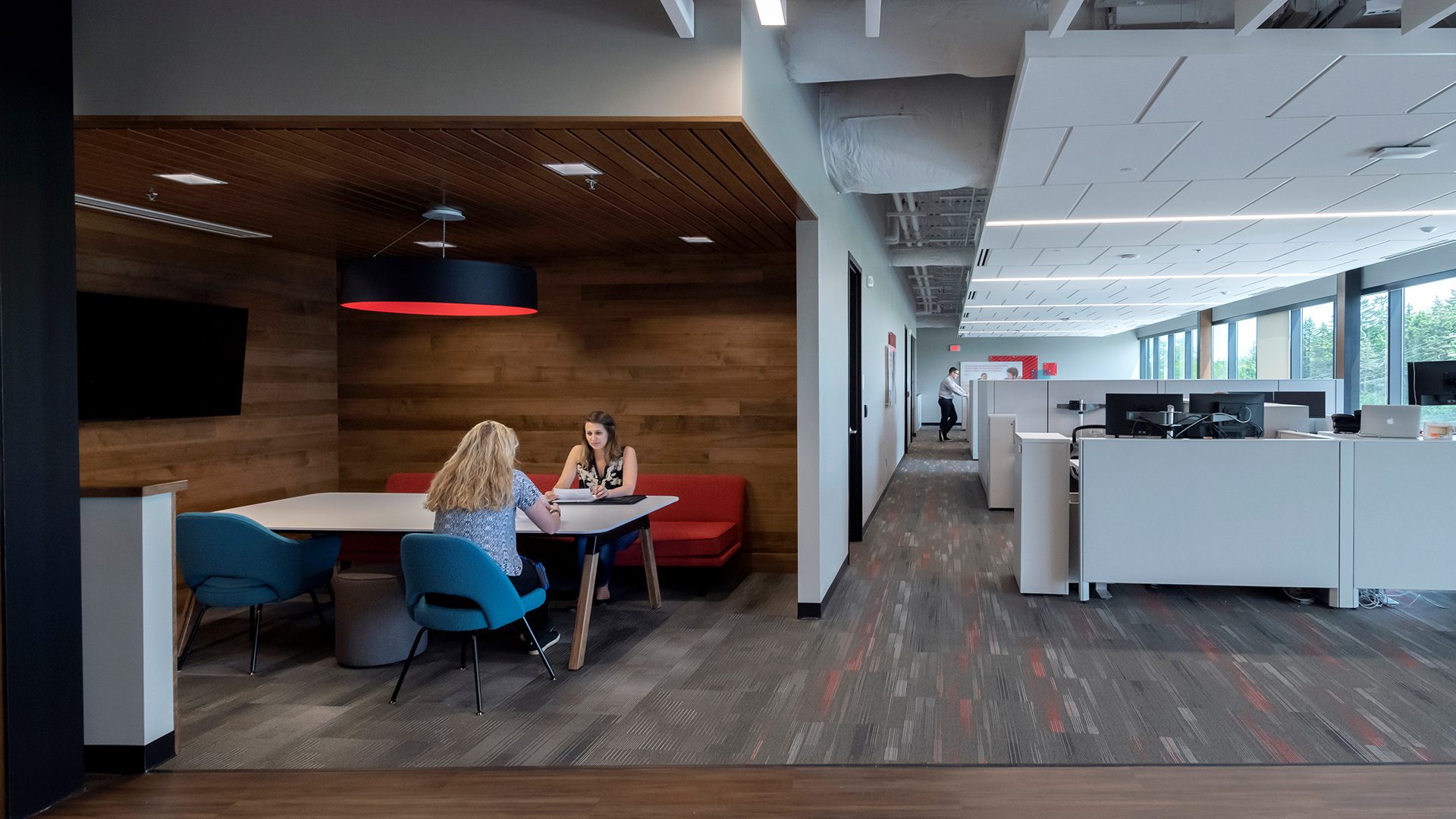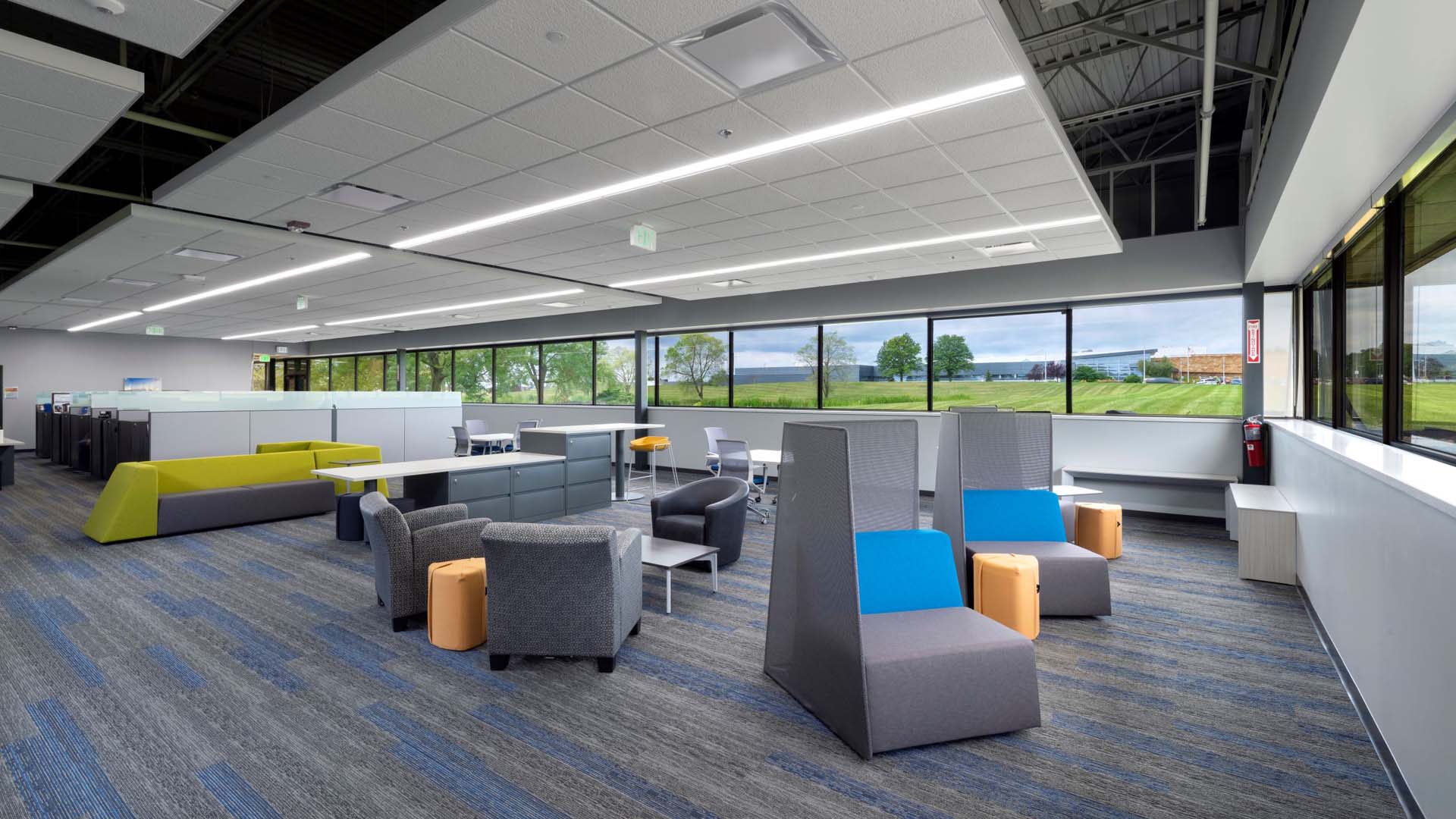“Flexible spaces will be used more, so those that can flow into each other and expand are great.” – Kelly Shields
It’s a good idea to keep the future in mind, too, says Hollman. As the company has expanded and added Dave’s Hot Chicken, it has needed to reimagine its headquarters. “We’ve made a lot of changes just in the four years we’ve been downtown,” he says. “We’re constantly thinking about how our current needs might evolve.” Change doesn’t always have to lead to a big, expensive construction project. Sometimes it can be as simple as replacing furniture. “Instead of having a giant boardroom table that is tethered to the ground, for example, you might have flexible furniture that can move around,” Shields says. “People may want to take their laptop and sit on a couch or sit at a counter, so we’re creating spaces that allow people to work in different settings. We’ve been more intentional about that than we have ever been before.


